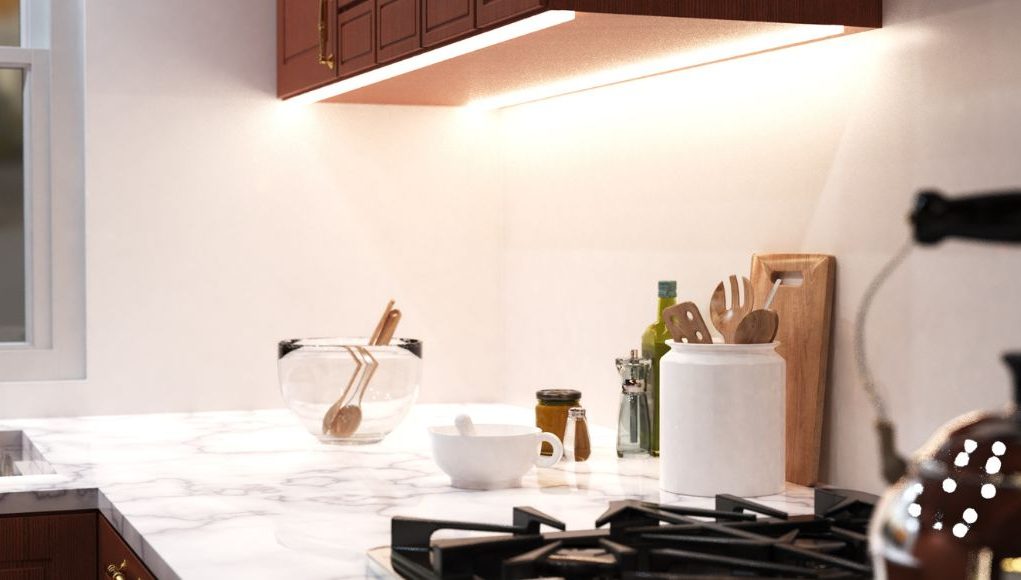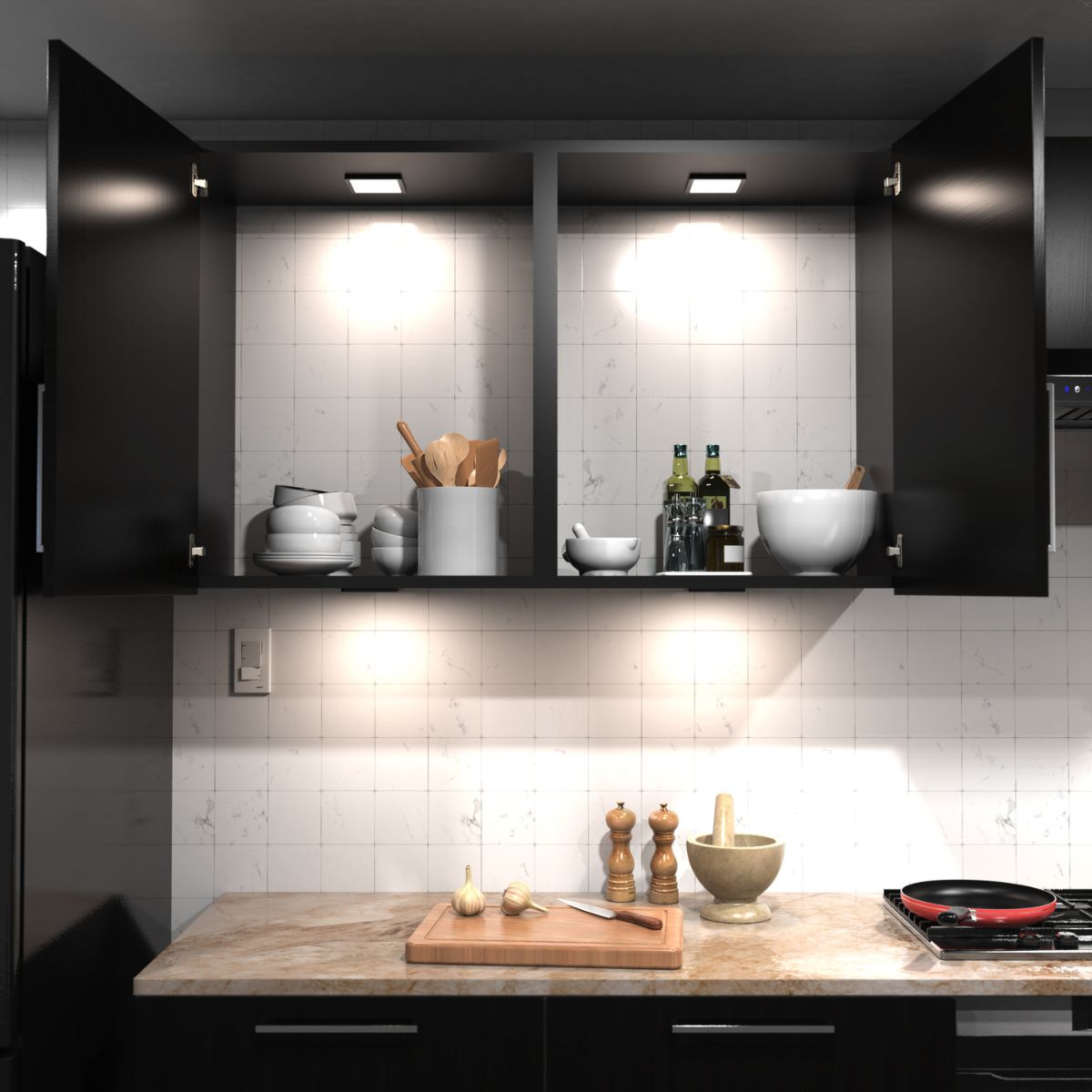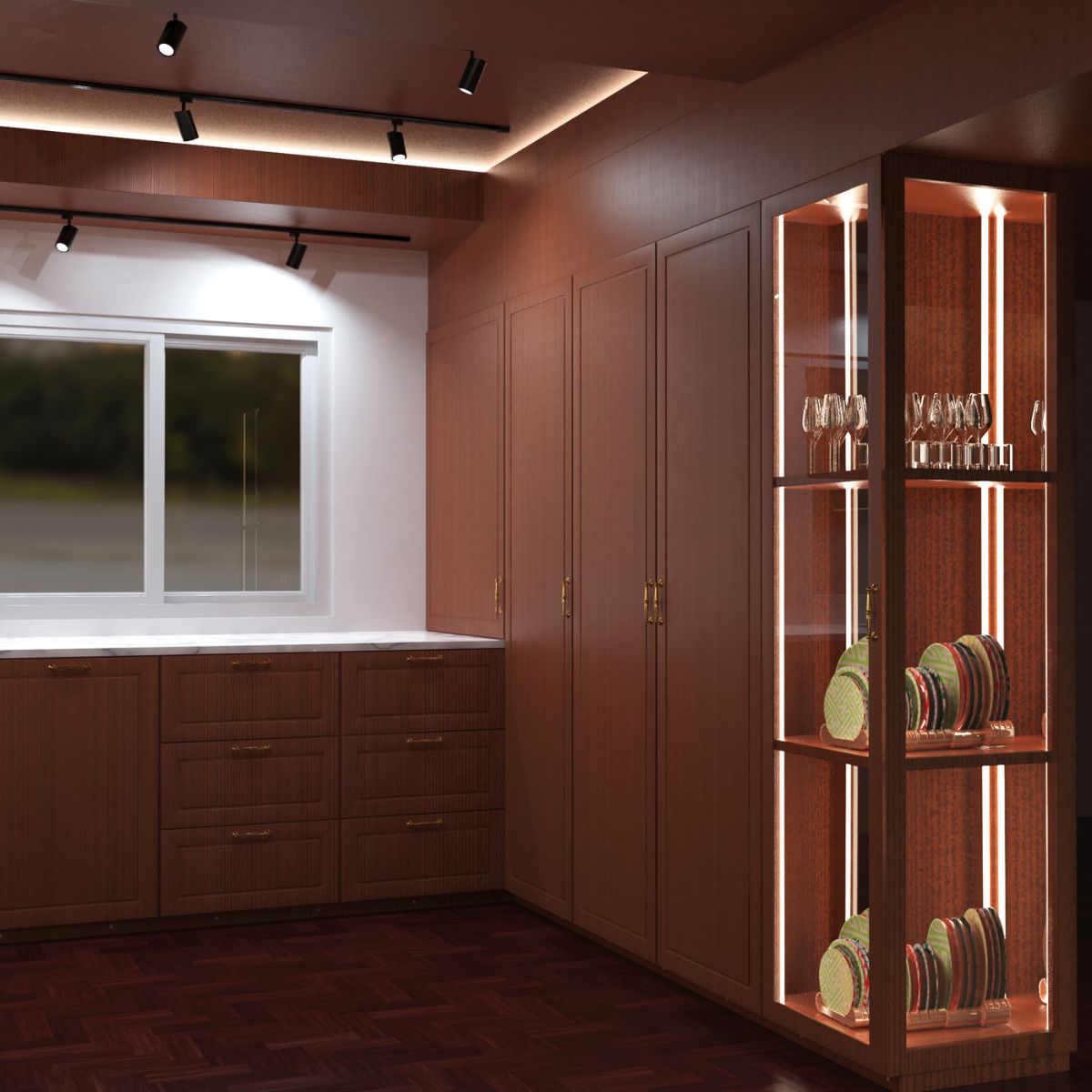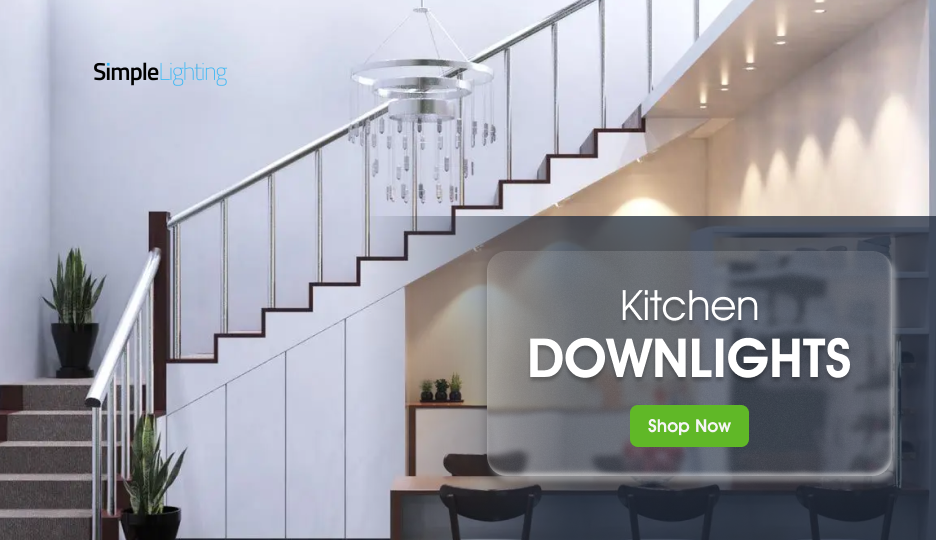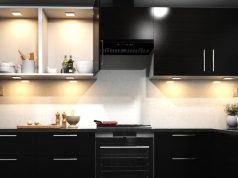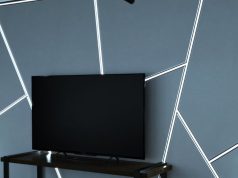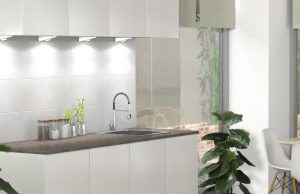Is this your kitchen?
The cabinets are sleek, the counters are spotless, and the island is stunning… and yet something about the atmosphere feels flat and a bit off. Chances are, it’s the lighting.
You see, lighting has the power to make or break a kitchen design. That’s why it has evolved from being just a necessity to a crucial element of design. Sure, it’s about seeing better when chopping onions, but lighting is more than that. It’s about shaping how the space feels, functions, and even how “true” colours appear.
The right lighting can make even a small kitchen look airy and spacious, while the wrong setup can make the most beautiful one look dull and cramped. But here’s the problem: lighting design is one of the most overlooked aspects of kitchen planning.
It’s unfortunate, but people would spend hours choosing tiles and worktops, yet often leave lighting decisions until the very end. And that decision is driven by the thought process of “This will look good in the kitchen,” not by “This will light the kitchen well.”
Even worse: Relying on a single ceiling fitting, which results in harsh shadows, poor visibility, or a room that never quite feels “right.” That’s why in this guide, we’ll uncover the most common kitchen lighting mistakes homeowners make, and how to avoid them.
Let’s get to it.
Mistake #1 – Relying on a Single Overhead Light
We already mentioned this above, but if your kitchen lighting plan starts and ends with a single ceiling fixture, you’re setting yourself up for disappointment.
“But it’s practical.”
Not when it creates uneven illumination: bright in one spot, gloomy in others. And did we mention it casts shadows exactly where you need light most: your work surfaces?
Here’s the thing. Kitchens are multifunctional spaces. You cook, eat, entertain, and sometimes even work there. That’s why a single light fixture won’t do. What your kitchen needs is layered lighting.
- Ambient lighting (your overall, general illumination)
- Task lighting (focused light for cooking, chopping, and cleaning)
- Accent lighting (decorative lighting that adds mood and highlights features)
You combine all these to create a harmony in your kitchen space.
For example, recessed downlights for overall brightness, under-cabinet LED strips for clear worktop illumination, and plinth or pendant lights for added warmth and style.
Pro tip: If you’re remodelling, plan your layers before fitting cabinets or tiles. It’s much easier (and cheaper) to wire for lighting now than to retrofit later.
Mistake #2 – Ignoring Task Lighting
If you have to shift to the side to get better lighting for your chopping, there’s something seriously wrong with your kitchen lighting.
And that’s one of the problems of Mistake #1: Your shadow blocks the counter—a classic case of missing task lighting. This is one of the biggest and arguably the most dangerous kitchen lighting mistakes.
While ambient light gives your kitchen general brightness, task lighting ensures you can see clearly in areas where precision matters most: over counters, cooktops, and sinks. Without it, even a well-lit room can feel dim and impractical. Not to mention unsafe. The best solution? Under-cabinet lighting.
LED strip lights, LED linear lights or discreet puck lights installed beneath wall cabinets direct light straight onto your worktops, eliminating shadows. Not only do they improve visibility, but they also add a modern touch to your kitchen aesthetic. Two birds, one stone!
If your kitchen doesn’t have wall cabinets, consider adjustable spotlights or pendants over prep zones for added lighting. And remember: the earlier you plan for task lighting in your design, the easier it is to integrate seamlessly.
Big brain tip: Choose high-CRI LED lights (Colour Rendering Index above 90) to ensure food looks vibrant and natural, not dull or washed out, as it tends to do under low-CRI lights.
Mistake #3 – Mixing Colour Temperatures
Have you ever walked into a kitchen where one light glows soft yellow and another shines icy white? The result is confusing and instantly cheapens the space. Mixing colour temperatures is one of the most common visual mistakes in kitchen lighting.
Colour temperature, measured in Kelvin (K), is what affects the tone and mood of your light:
- Warm white (2700K-3000K): Cosy, inviting, and relaxing. Ideal for dining zones.
- Natural white (3500K-4000K): Bright and balanced, perfect for modern kitchens and task lighting.
- Cool white (5000K+): Crisp and bright, but can often be too clinical for home kitchens
For most kitchens, 3000K-4000K strikes the perfect balance between warmth and clarity. It keeps your space fresh without feeling harsh. Whatever you choose, the key is to keep it consistent across all fittings to maintain a cohesive and professional look.
Pro tip: Check your bulb or LED strip packaging before buying. Even lights from the same brand can vary in temperature. Stick with one range for harmony.
Mistake #4 – Forgetting About Dimmers and Controls
As we’ve established above, your kitchen isn’t just for cooking anymore. It’s also a place for living.
It’s where you host dinner parties, help kids with homework, or unwind with a glass of wine. All of these different activities require different lighting. This means your kitchen lights should be able to adapt to all these moments.
Sadly, many homeowners still install fixed-output lighting, completely missing out on the flexibility that dimmers and smart controls provide.
Think about it. Do you want a kitchen that’s always at its maximum light output? Or do you want one that can adjust to the level of light you need, depending on the current kitchen activity?
Dimmable LEDs let you adjust brightness depending on the mood or task at hand. Bright and functional during cooking, and soft and ambient during dining. Also consider dividing your lighting into zones (for example, one switch for ceiling downlights, another for under-cabinet strips), giving you layered control.
Even better, smart lighting systems let you adjust colour, brightness, and timing through apps or voice commands. What once was considered a luxury is now a smart (and affordable) way to enhance comfort and efficiency.
Pro tip: Only use compatible dimmers and controllers to ensure your lights don’t flicker or burn out prematurely.
Mistake #5 – Poor Fixture Placement
You can have the most stylish (and expensive) light fitting, but if they’re poorly positioned, they can’t be any better than your standard LED light bulb.
Common mistakes include downlights too close to cabinet doors, pendants hung too low (creating shadows) or too high (causing glare) over islands, or spotlights that create uneven pools of light. Lighting placement is a balance between function and aesthetics.
Here are some simple rules of thumb:
- Plan and test your lights. The best-lit kitchen’s lighting layout was not planned on the fly. Having a proper lighting plan can save you all the hassle of dealing with the results of poor fixture placement.
- Downlights: Space them evenly for good, gapless coverage. Avoid placing them directly above tall cabinet edges or shiny surfaces that reflect glare.
- Pendant lights: Hang them roughly 75-90cm above a kitchen island or counter to avoid obstructing views and causing glare.
- Wall lights: Position them so they complement rather than compete with other fixtures.
The best way to do this is to sketch your lighting layout on a top view of your kitchen. Visualising the spread helps you spot potential dark corners or hot spots before installation.
Which gets us to this pro tip:
You can test light angles with a torch before committing. You’ll instantly see where shadows fall and where potential dark corners are going to be.
Mistake #6 – Neglecting Ambient or Accent Lighting
A kitchen without depth and contrast will feel sterile and flat. It can start to feel more like a showroom than a home.
That’s where ambient and accent lighting step in.
Ambient lighting provides the general lighting for your kitchen. You could think of this as your lighting’s foundation. The stronger the foundation is, the better the outcome, right? Opt for a warmer tone to create a less clinical, more inviting and relaxing vibe.
Your accent lighting is the design element that gives your space depth and personality. Think linear lights illuminating textured splashbacks, LED strip lights along island edges that create a floating effect, and shelving lights that highlight silverware or your plate collection.
Pro tip: Pair LED strips with diffused aluminium profiles for a smooth, professional glow, eliminating visible light dots. It’s a small detail that makes a big difference.
Mistake #7 – Overlooking Natural Light Balance
Artificial light is powerful and one of the greatest inventions of mankind. But nothing beats the natural glow of daylight. Yet many kitchens either overcompensate with too much artificial lighting or unintentionally block sunlight with dark cabinetry or bulky fittings.
The key is balance.
Make the most of natural light sources like windows, skylights, and glass doors, and use LED lighting to complement (not compete with) daylight.
Here are some things to consider:
- Use light-reflective surfaces, such as gloss cabinets, polished tiles, and white finishes, to bounce natural light deeper into the room.
- Choose LEDs with high CRI to keep colours consistent when switching from natural to artificial light.
- Install daylight sensors or smart controls that automatically adjust brightness as the sun rises or sets.
Mistake #8 – Forgetting Maintenance and Access
When planning your lighting, don’t just plan the installation part. Also, plan for the years down the line. We’re talking about maintenance. Despite the long lifespan of LEDs, they’re still not forever. There will come a time when you’ll need to replace them. And unfortunately, many homeowners overlook maintenance when selecting fixtures.
One example of this is choosing fittings with intricate designs that can make cleaning difficult in a grease-prone environment like the kitchen. Another is installing lights in hard-to-reach areas or over areas where you plan to put appliances.
Here’s how you can avoid this frustration:
1. Always choose LED fittings with long lifespans (25,000+ hours) to ensure a long maintenance interval.
2. Opt for sealed or IP-rated fixtures in moisture-prone areas to protect your lights from water damage.
3. Ensure easy access for cleaning and bulb changes. Plan where you’ll place your appliances and commit to it to better plan light placements.
Pro tip: Use LED light fixtures that are easy to clean with a few wipes from a damp microfibre cloth. Integrated LED strips with aluminium profiles are an example. They protect against dust, simplify maintenance, and look neater and cleaner.
Mistake #9 – Overdoing Decorative Lighting
We get it. It’s easy to fall into the trap of decorative lighting.
Statement pendants, vintage bulbs, LED strips… Today’s lighting options are just so incredibly tempting. But too many decorative fixtures can clutter your kitchen and compete for attention where it’s not needed.
Remember that decorative lighting is meant to enhance, not overwhelm. Here’s a general rule of thumb:
If you already have standout features, such as a striking island, bold backsplash, or textured cabinetry, keep the lighting simple. On the other hand, if your kitchen design is simple and minimalist, a statement pendant or sculptural fitting can be your kitchen’s centrepiece. The key is balance. (Again.)
Your lighting should appear intentional, not excessive. Start with functionality, then layer in personality.
Pro tip: When choosing decorative fixtures, consider scale. A trio of smaller pendants often looks better than one oversized fitting in modest kitchens.
Bonus Tips – Designing with Light Like a Pro
Ready to create a kitchen that looks as good as it works?
We’ve compiled a quick lighting checklist to guide your next remodel:
- Plan early. Think about wiring, switch placement, and lighting zones before your kitchen is installed.
- Layer your light. Combine ambient, task, and accent lighting for comfort, function, and balance.
- Keep tones consistent. Choose one colour temperature across the room.
- Use dimmers or smart controls. Adapt brightness for every mood and have full control over your lights.
- Think ahead. Choose energy-efficient, easy-to-maintain fittings and placements.
- Add depth. Use plinth lights or shelf lighting to soften harsh edges.
- Test placement. Avoid glare and shadows with careful positioning—test before you commit.
The best kitchen lights are the ones that feel intentional rather than forced. They’re the ones that feel like they’re part of the structure, rather than added on.
Take note of that.
Good Lighting Transforms
Nothing transforms a kitchen quite like lighting.
Beautiful cabinets and high-end appliances might look great, but the perfect kitchen is only a dream without proper lighting. The mistakes we’ve listed are missteps that countless people have committed, leading to regret over their kitchen lights. Knowing, understanding, and avoiding these mistakes means more than just fixing shadows or glare…
It’s about unlocking your kitchen’s full potential.
And Simple Lighting has everything you need to get your kitchen lighting right. If you feel like you’re ready to take your kitchen to the next level, check out our collection today!


